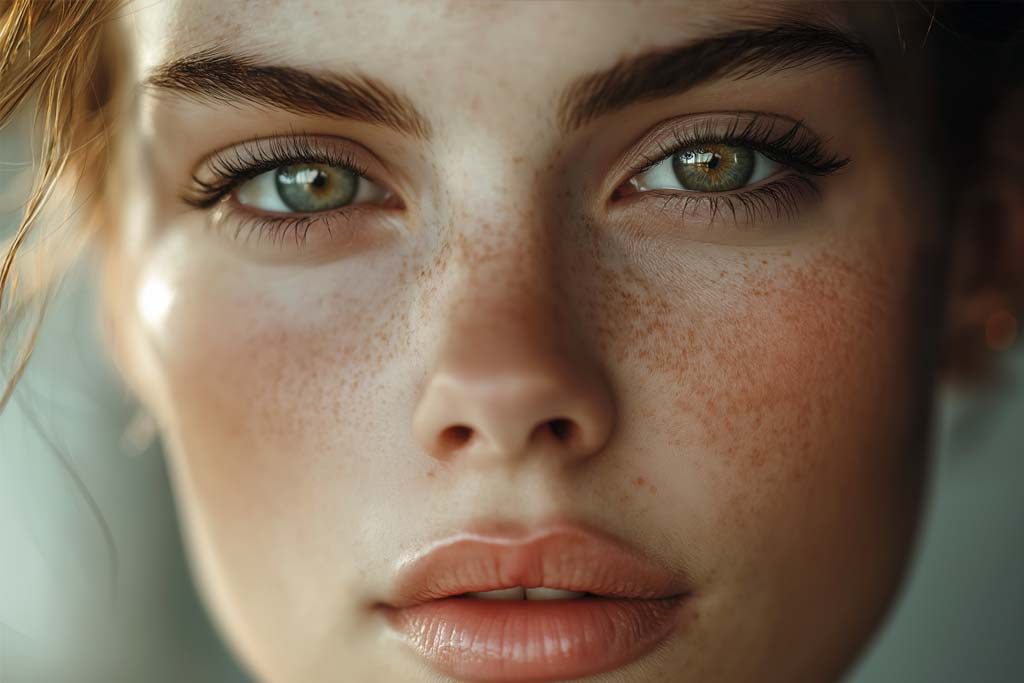
Treating wrinkles in hard-to-reach or delicate areas can be one of the most intricate aspects of aesthetic medicine. These regions often pose unique challenges, such as thin skin, dynamic movement, or higher risks of complications. Selecting the right dermal filler, paired with precise techniques, is crucial to achieving natural and effective results.
Understanding Challenging Areas
Some facial areas present greater challenges for wrinkle correction, requiring expertise and tailored solutions. These include:
1. Under-Eye Hollows (Tear Troughs):
- Characterized by thin skin and limited subcutaneous tissue.
- Risk of a “Tyndall effect” (blueish discoloration) with improper filler placement.
2. Perioral Lines (Around the Mouth):
- Often referred to as smoker’s lines, these fine vertical wrinkles are notoriously hard to treat due to skin thinness and repetitive movement.
3. Nasolabial Folds:
- Deep lines that run from the nose to the corners of the mouth. Correcting these without creating an overfilled appearance can be tricky.
4. Marionette Lines:
- Wrinkles extending downward from the corners of the mouth, often associated with sagging skin.
Product Selection for Optimal Results
The choice of dermal fillers plays a pivotal role in treating challenging areas. Each product’s viscosity, elasticity, and longevity must align with the needs of the treatment area. Here are some product recommendations:
Under-Eyes (Tear Troughs):
- Juvederm Volbella: With a smooth texture and low hydrophilic properties, it minimizes swelling and integrates naturally.
Perioral Lines:
- Belotero Balance: Known for its seamless skin integration, this filler is ideal for addressing fine lines.
- Restylane Kysse: Offers precise corrections and smooth results for delicate areas.
Nasolabial Folds:
- Juvederm Ultra Plus: A thicker filler suitable for deep folds, providing long-lasting support.
- Restylane Refyne: Utilizes XpresHAn Technology for flexible movement, ensuring natural expressions.
Marionette Lines:
- Juvederm Vollure: Balances durability and softness for moderate to severe wrinkles.
- Restylane Defyne: Delivers structural support while maintaining flexibility.
Tailoring the filler to each specific area’s demands ensures optimal patient satisfaction by addressing unique anatomical challenges and delivering results that look natural and harmonious with the patient’s overall facial features.
Techniques for Treating Difficult Areas
Advanced injection techniques are essential to achieve safe and natural outcomes in these challenging regions. Consider the following approaches:
1. Under-Eyes:
- Use microcannulas to reduce the risk of bruising and swelling.
- Place fillers deeply to avoid superficial discoloration.
2. Perioral Lines:
- Employ linear threading or cross-hatching techniques to smooth wrinkles while maintaining subtlet
- Use minimal product to avoid overcorrection.
3. Nasolabial Folds:
- Apply layering techniques to create a natural lift without a “puffy” look.
- Combine fillers with cheek augmentation for a balanced result.
4. Marionette Lines:
- Focus on precise placement to address volume loss without compromising mobility.
- Consider using fillers in combination with skin-tightening treatments.
Mastering these techniques minimizes risks, ensures patient safety, and enhances the aesthetic outcome by creating results that blend seamlessly with the patient’s natural facial contours and expressions.
Managing Risks and Complications
Despite best practices, complications can occur. Common issues include overfilling, migration, or lumps. Strategies to prevent and manage these complications include:
- Product Control: Using the appropriate amount of filler and avoiding superficial placement.
- Hyaluronidase: Ensuring readiness to dissolve fillers when necessary.
- Aftercare: Educating patients on post-treatment care to minimize swelling and bruising.
Thorough anatomical knowledge and continuous training are key to minimizing risks and ensuring patient safety by equipping practitioners with the expertise to handle complications, refine techniques, and consistently deliver results that meet patient expectations.
Conclusion
Treating challenging areas with dermal fillers requires a combination of skill, experience, and the right tools. By understanding the nuances of each region, selecting the appropriate products, and employing advanced techniques, cosmetic professionals can deliver outstanding, natural-looking results for their patients.
Frequently Asked Questions

About the Author: Doris Dickson is a specialist writer for Health Supplies Plus, focusing on the aesthetic medicine industry. She diligently researches cosmetic treatments and products to provide clear, concise information relevant to licensed medical professionals. Her work supports Health Supplies Plus’s commitment to being a reliable informational resource and trusted supplier for the aesthetic community.
Disclaimer: The content provided in this article is intended for informational purposes only and is directed towards licensed medical professionals. It is not intended to be a substitute for professional medical advice, diagnosis, or treatment, nor does it constitute an endorsement of any specific product or technique. Practitioners must rely on their own professional judgment, clinical experience, and knowledge of patient needs, and should always consult the full product prescribing information and relevant clinical guidelines before use. Health Supplies Plus does not provide medical advice.
